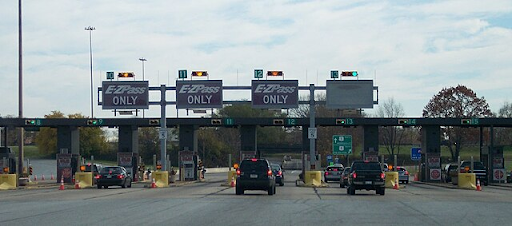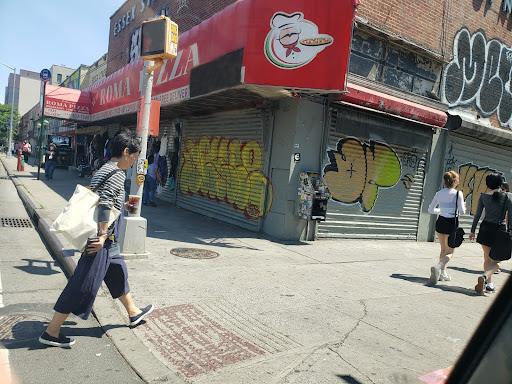In the wake of painfully long standstills and thick gray smog, congestion pricing recently emerged in New York City as a panacean strategy to combat the escalating issue of traffic congestion. The two main objectives of congestion pricing are to alleviate traffic congestion and to enhance air quality, by encouraging the use of public transportation. Several big cities including Singapore, London, Stockholm, and Milan have adopted this approach, which imposes a fee on vehicles entering a designated area during peak traffic hours. After London implemented their congestion charge in 2003, traffic in the pricing zone has decreased by 18% during the weekday peak pricing hours. The MTA in New York City hoped to implement its own version of this system until New York State Governor Kathy Hochul put an indefinite pause on the plans, but would this strategy, if implemented, be just as effective?
The two main objectives of congestion pricing are to alleviate traffic congestion and to enhance air quality, by encouraging the use of public transportation.
In 1975, Singapore implemented the Singapore Area Licensing Scheme — the world’s first road fees to decrease traffic. This system has been successful in managing traffic congestion and has served as a framework for many other cities, like London, Stockholm, and Milan. All of the above cities have seen reductions in traffic congestion and improvements in air quality after creating toll zones. These historical examples show that, when implemented effectively, congestion pricing can be a powerful tool for managing urban traffic and improving the quality of life in cities.
In the context of New York City, the plan entailed charging a toll for vehicles traversing the Congestion Relief Zone in Manhattan, an area encompassing local streets and avenues at or below 60th Street. Congestion pricing only affects the areas below 60th street, while vehicles traveling only on the FDR Drive, West Street/West Side Highway, or the Hugh L. Carey connections to West Street would not be charged a toll.
The toll rates were set to be variable, contingent on the type of vehicle, the time of day, applicable crossing credits, and the payment method. Passenger vehicles, for example, would have been charged fifteen dollars, while small trucks would have been charged twenty four dollars.
Currently, the peak hours were going to be from five a.m. to nine p.m. on weekdays and nine a.m. to nine p.m on weekdays. This is practically the entire day, and most stores and restaurants would be closed by the time the peak hours are over. Even after the peak hours, drivers passing the congestion zones at night would still have to pay a toll, but the toll would be reduced by seventy five percent.
Payment
The preferred method of toll payment would have been through a New York E-ZPass account. An antenna from the overhead toll machine would have automatically collecedt the information from the white electronic transponder box inside/on the car, and take the toll amount from the prepaid E-ZPass balance. The process would have used signal broadcasting and communications to create a convenient practice where drivers would not need to pay later on.
Since E-Z passes are an interstate connected system, drivers from out of state would have been able to use their passes (like the TxTag from Texas) to pay the congestion price in Manhattan. For drivers without an E-ZPass, a photograph would have been taken of their license plate and a bill would have been mailed to the address of the registered vehicle. However, visitors without EZ-Passes would have been expected to pay more.

Possible Negatives
Taxis have a toll rate of $1.25 per ride while Uber, Lyft and other car services have a rate of $2.50 per ride. These tolls are just additional costs that would have been passed on to the passengers in forms of fees. Moreover, since there would have been such a drastic difference between car service rates and private cars ($15), it would have been more likely that people would have gone from driving themselves to and from Manhattan to just calling a ride service app. This, however, would not have decreased the number of cars on the road.
Students attending Manhattan college campuses would have had a harder time getting to and from school (without the use of public transportation), effectively stranding them. Mom and Pop shops along with small businesses would have received fewer patrons as more tourists and locals, alike, would have been discouraged from entering lower Manhattan.
“I think Congestion Pricing would have been a good idea, but not a perfect one. If it had been implemented, it would have definitely helped to alleviate all the traffic and congestion and noise pollution, but it would also have encouraged drivers to go through the Bronx instead, bringing all the noise and pollution through poorer communities (as per the usual status quo). I think people should have also considered that taxing drivers only blocks poorer drivers, as those with more disposable income could afford to pay the fee. However, Congestion Pricing would have been definitely a solid first step in the right direction,” said Lydia Du ’24.
Even so, why should you have cared?
If you are a student, chances are your parents would have driven past the congestion zones. If they didn’t, at least somebody you know – teachers, extended family members, even your dentist – would have be affected. Not to mention, this may have impacted how you would have gotten to your college campus, if you were going to attend higher education in the adjacent areas of 60th Street in Manhattan. As for every other New Yorker who can drive, the impact of congestion pricing would have been quite self explanatory.
Would This Have Been a Death Sentence For Businesses in Manhattan?
Not particularly, but traffic was predicted to decrease, had Congestion Pricing gone into effect. In Chinatown, many businesses have already lowered their shutters and others are scraping by, due to after effects of the COVID-19 pandemic. Many of the repeat customers already live in Manhattan/adjacent areas, but reaching and supporting small businesses would have been harder than ever, had Congestion Pricing been implemented.

The Positives
Congestion pricing would have had the possibility of heavily limiting traffic to and from Manhattan and the rest of the boroughs. As New Yorkers and visitors could have found alternative ways to enter the metropolis, the amount of fossil fuels and gas wasted in heavy traffic would have been diminished. In turn, better air quality and less smog would have been expected had congestion pricing been implemented. Not to mention, congestion pricing would have encouraged carpooling and the taking of public transportation.
With less cars on the road, the number of traffic accidents (especially from quick braking and road rage) was expected to decrease.
There was some flexibility in the congestion pricing policies. For instance, low-income drivers who made less than $50,000 would have been eligible for discounts. Yellow school buses, city vehicles (garbage trucks, fire trucks and police vehicles), along with automobiles carrying disabled people would have also been exempt from paying the congestion price based toll.
Alternatives and Room for Improvement
We can debate the effectiveness of congestion pricing, but there are other options to improve the city’s transportation, such as fixing New York City’s public transportation. New York City, especially Manhattan, is notorious for its rodent-infested, musty, and unsafe subway stations with significant delays. If public transportation was more reliable, well-maintained, and safe, visitors would feel less of a need to hail a yellow cab or drive their own cars. “Alternatives could be to subsidize public transport even more to make it cheaper for consumers, and/or making public transport more reliable,” said Mr. Fialkow, a Microeconomics and Research teacher at Bronx Science.
If congestion pricing had gone through, it was predicted that after paying off the costs to implement the program, 80% of the money gathered from congestion pricing would have been used towards improving New York City’s Public Transportation system. The money was expected to go towards cleaning up the subways and funding transportation programs.
Additional Comments
As a New Yorker who makes a trip to Manhattan every weekend to visit family members, I can’t say that I was exactly pleased with the idea of congestion pricing. Typically, my parents drive their own car to Manhattan, but had congestion pricing gone through, we may have had to look for alternate routes of transportation.
That being said, congestion pricing, if it had been implemented, could have been successful in stopping people from visiting congested areas of Manhattan — that is, people who could not have afforded to pay the steep prices. If it had been implemented, New York City would have been the first American city to adopt congestion pricing. This historical plan was not entirely bad and could have promoted environmental policies that would have been a step in the right direction. Yes, congestion pricing could have been inconveniently expensive for the average New York driver not making millions of dollars, but like other drastic measures, criticisms would have been expected at first. Congestion pricing, if it had been implemented, could have lowered carbon emissions and made New York City a little more green.
An Indefinite Pause on Congestion Pricing
However, just two weeks before congestion pricing was set to take effect, Governor Kathy Hochul announced an indefinite pause on the program. For the record, there is still hope for congestion pricing supporters, as the Metropolitan Transportation Authority (MTA) board needs to vote in favor of delaying congestion pricing before the plan is unofficially “axed.” Now that congestion pricing is on the rocks, proponents are rallying for Governor Hochul to continue with the plan for congestion pricing or at least to keep her promise of funding the MTA.
The MTA reportedly already has committed to hundred million dollar contracts linked to congestion pricing technology and its execution. The congestion pricing program was expected to bring in a billion dollars worth of revenue for the MTA that was needed to improve its transit and signal reception. With the uncertainty around the congestion plan and holes in the MTA’s budget, it’s safe to say the future of New York’s transportation currently looks quite disorganized.
“I think Congestion Pricing would have been a good idea, but not a perfect one. If it had been implemented, it would have definitely helped to alleviate all the traffic and congestion and noise pollution, but it would also have encouraged drivers to go through the Bronx instead, bringing all the noise and pollution through poorer communities (as per the usual status quo). I think people should have also considered that taxing drivers only blocks poorer drivers, as those with more disposable income could afford to pay the fee. However, Congestion Pricing would have been definitely a solid first step in the right direction,” said Lydia Du ’24.

